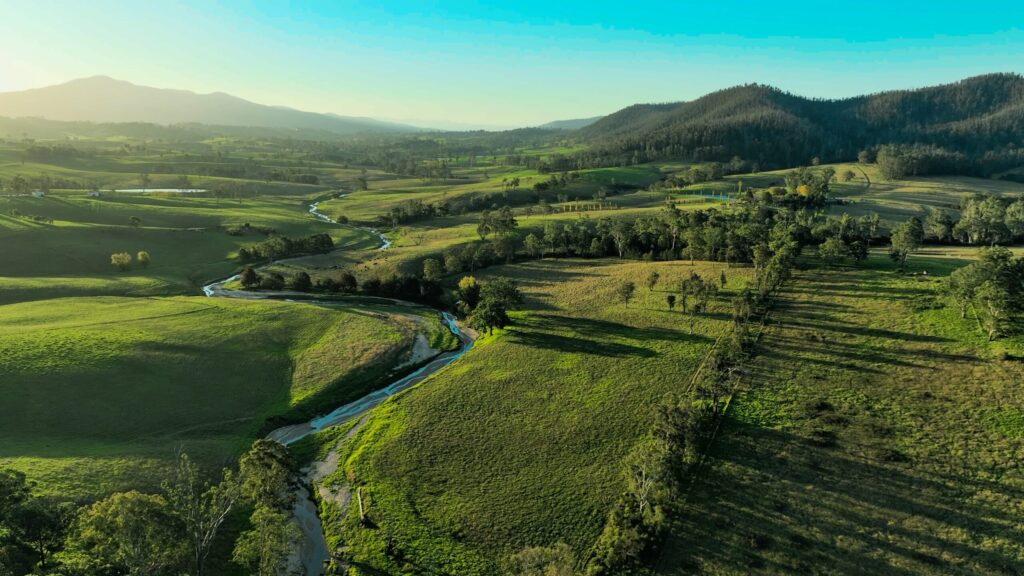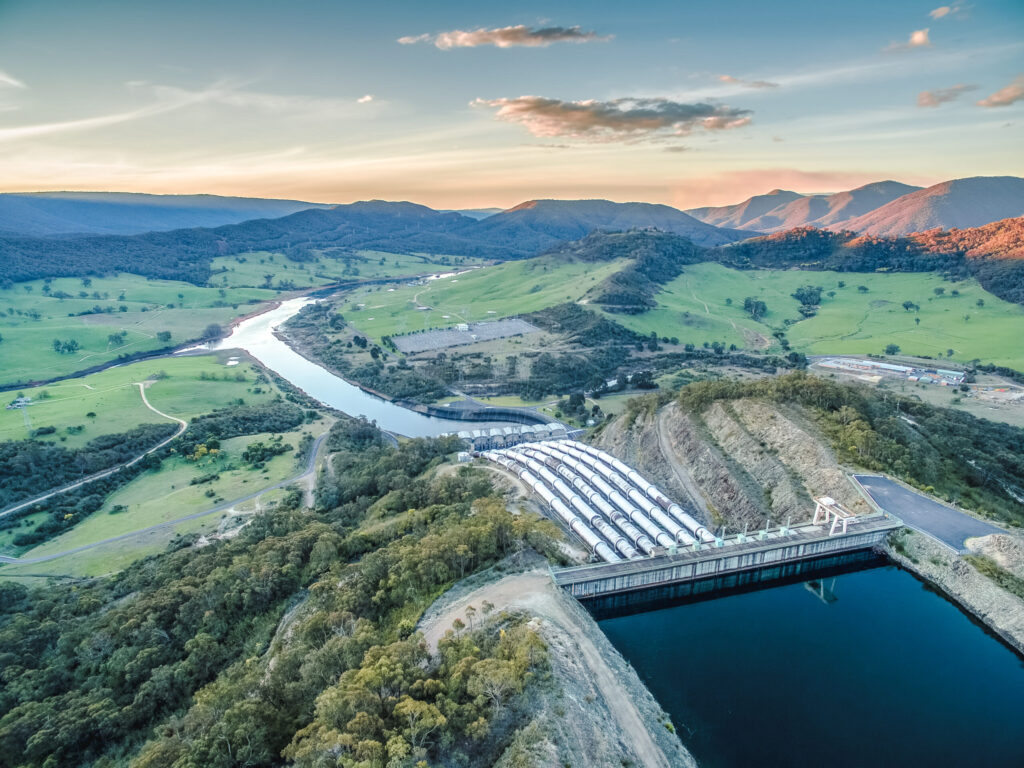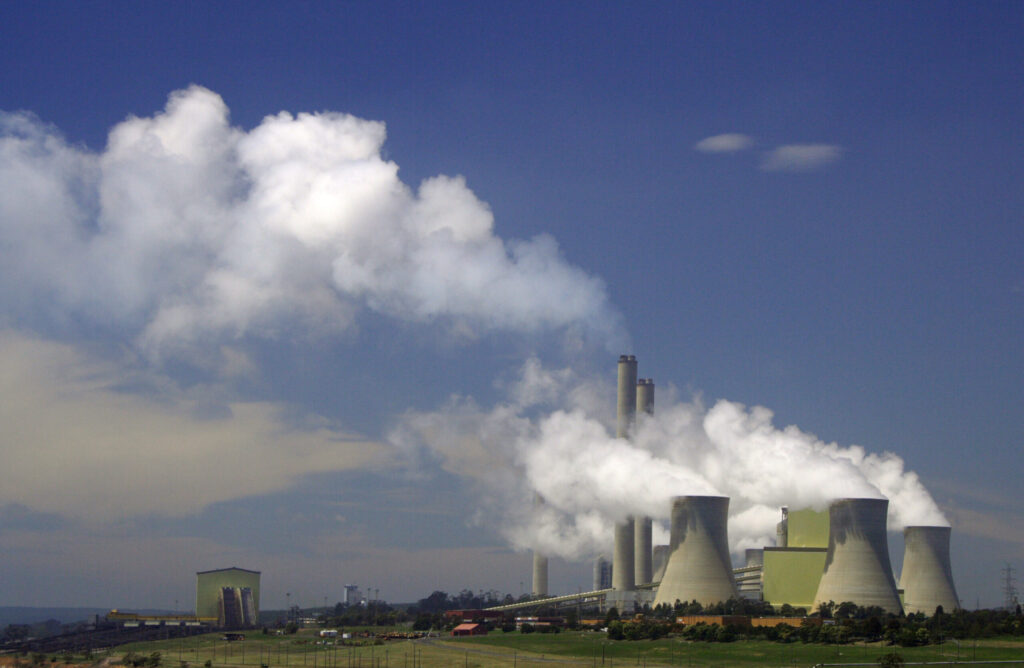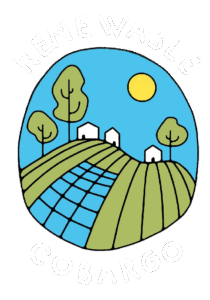Cobargo
a rural village energy story
Cobargo is a small rural village on the far south coast of New South Wales with a population of about 800 people.
Cobargo was devastated during the 2019–2020 Black Summer bushfires. One significant impact of the fires was losing access to electricity.
This is the story of what residents of this small village learned and how we worked together to develop energy resilience in preparation for the next time the grid goes down.
It was such a big thing to be without power and be without communications. It was really, really hard and just vitally important to find a way to work together and not have to go through that again.
Deb Summers, Renewable Cobargo
Without power and communications you can’t do anything
Chris Walters, Cobargo Community Access Centre
Roger Park, Senior Deputy, Cobargo Rural Fire Brigade
Similar to many other rural localities, Cobargo’s electricity supply is vulnerable, especially during extreme natural events.
Most of Cobargo’s electricity is generated by large power plants in distant places like the Snowy Mountains or the Hunter region in New South Wales, or the Latrobe Valley in Victoria.
In addition, Cobargo is at the far end of the transmission line that goes through Cooma and Bega, NSW – with a lot of potential points of failure along the way.



From the power plant, electricity makes its way through hundreds of kilometres of vulnerable high voltage transmission lines to rural localities like Cobargo.
If all goes well, electricity is available to power homes, businesses and farms.
But in the aftermath of the 2019–2020 Black Summer bushfires, the national electricity grid was down for an extended period of time. Cobargo and the surrounding district lost access to electricity – in some cases for months.
It was pretty difficult in town. Once your electricity goes down, your water goes down as well.
Roger Park, Cobargo Fire Brigade
Three weeks without electricity in a community … You can’t overestimate the damage that can do in many ways.
Steve Williams, Cobargo School of Arts Hall
Without power …
you can’t charge a mobile phone, keep warm or cold, light the house, run the shop, access the internet, access communications towers, refrigerate or freeze food, get clean water, cook food using electric cooktops or ovens, run milking machines, run fuel pumps, get money from ATMs, use cards to buy goods
… ordinary aspects of daily life just don’t work.
Our dairy farm lost power for 32 days
June Tarlinton, Chair, Cobargo Co-operative Society and dairy farmer
Emergencies can and probably will happen again. The national electricity grid can and probably will go down again, and will take some time to be fixed. Energy resilience improves as energy independence increases.
Energy independence is vital for small communities
Zena Armstrong, Renewable Cobargo
In 2020 Cobargo community members formed a group called Cobargo and District Energy Transition (CaDET). The wide-ranging effects of losing access to electricity emerged as a key issue.
CaDET wanted to increase energy resilience in our community through a project we called Renewable Cobargo.
We held community meetings, brainstormed a wide range of ideas and began to work together to rebuild and prepare for future disasters that included extended power outages.
Working together to build energy resilience
Deb Summer, Renewable Cobargo
Monica Considine, Cobargo Tool Library
What really excites me about Renewable Cobargo projects is linking the people that need renewable and reliable energy with the new technologies that are out there.
Alex Boulgakov, Renewable Cobargo
Understanding energy and learning how to use energy more efficiently through changing our behaviour is one key to developing an effective response to limited energy supply. And, as an added bonus, efficient use saves money on electricity bills – the cheapest electricity is the electricity you don’t use.
Moving towards energy efficiency and resilience
Frank Muller, Renewable Cobargo
David Neyle, Renewable Cobargo, Community Energy Coordinator
Local energy generation can make the supply of electricity more resilient and reduce dependence on very long and vulnerable transmission lines.
Many in Cobargo have embraced local energy generation. Some are generating energy through installing rooftop solar panels. Combined with battery storage, rooftop solar is helping to provide reliable and sustainable energy to households and businesses.
Rooftop solar panels installed in Cobargo after the 2019-2020 bushfires
Renewable Cobargo initiated a renewable energy project which secured funding for four community buildings to be equipped with rooftop solar panels and battery storage, so that these shared building will continue functioning when the grid is down.
The Rural Fire Station, the Cobargo Co-op, the RSL Hall and the School of Arts Hall can become community refuges in times of extreme heat, bushfires or other extreme events that affect the grid supply of electricity.
Building Cobargo’s energy refuges
Bill Southwood, Renewable Cobargo
Steve Williams, Cobargo School of Arts Hall

Locations of the four energy refuges in Cobargo
Cobargo residents also imagined creating a future of energy independence through larger scale local energy generation. What if Cobargo had a microgrid?
With a microgrid – a small solar farm with battery storage and generator backup – a small rural village like Cobargo could generate electricity locally. When conditions are normal and the national grid is functioning, the microgrid will export electricity.
If the electricity supply is disrupted, a microgrid would be able to disconnect from the grid and supply electricity to the local area, making the community much more energy independent than it is currently.
Imagining a microgrid for Cobargo
Zena Armstrong, Renewable Cobargo
Frank Muller, Renewable Cobargo
The microgrid is an opportunity to provide resilience to the township of Cobargo. It’s an example of doing the energy transition in a way that provides resilience with a renewable energy supply that reduces emissions.
Frank Muller, Renewable Cobargo
The 2019-2020 Black Summer bushfires were a huge challenge to the community and it’s important to acknowledge that a lot of positive changes have come about as a result of the community’s determination to be better prepared in the future.
Since the 2019-2020 bushfires, the Cobargo and district community residents have been working together to develop local energy solutions focused on self-sufficiency and sustainability.
Building a sustainable future
Alex Boulgakov, Renewable Cobargo
Dan Williamson, Manager, Cobargo Co-op
We’re imagining a future with energy resilience and independence – a future where the lights will stay on
Credits
Renewable Cobargo is grateful to everyone who helped us to make Cobargo: a rural village energy story. First, we would like to acknowledge the Djiringanj people of the Yuin Nation, the traditional custodians of land on which this project is situated. We acknowledge that the Djiringanj people have been caring for this Country for tens of thousands of years and we respect their connections to land, sea and community. We pay our respects to their Elders past and present and extend that respect to all Aboriginal and Torres Strait Islander peoples today.
We also thank everyone who shared their experiences, thoughts and wisdom with us. We could not have undertaken any of the projects described here or developed this visual story without the support of the Cobargo Community Bushfire Recovery Fund and the federal government’s Black Summer Bushfire Relief Fund.
Production: Crewcible
Information about the Cobargo Microgrid project
